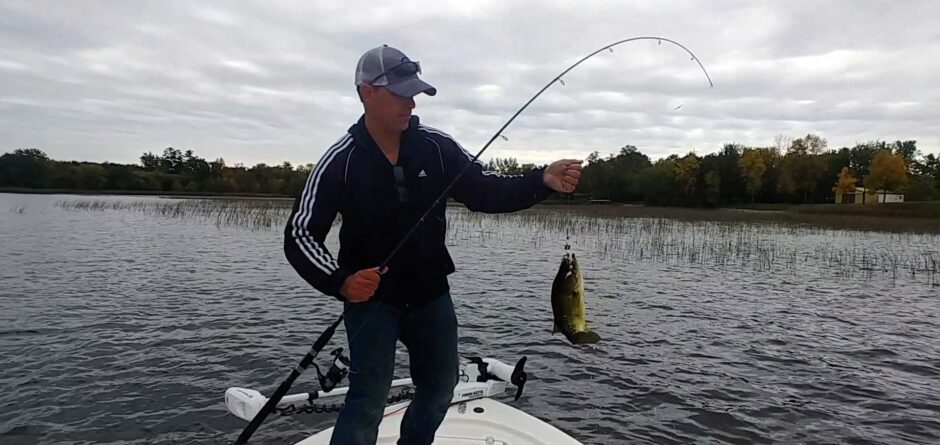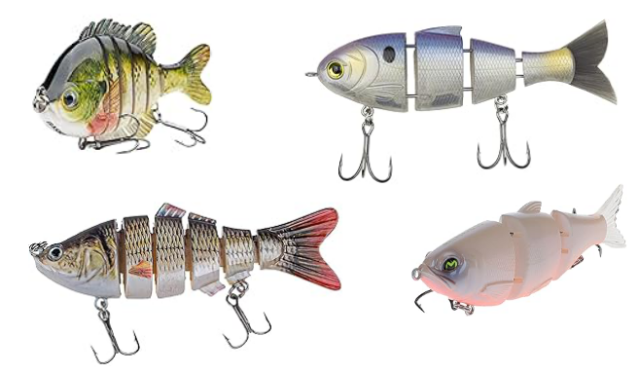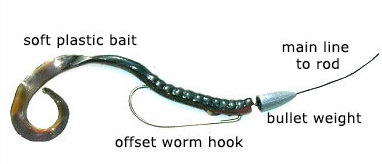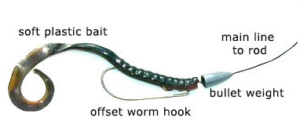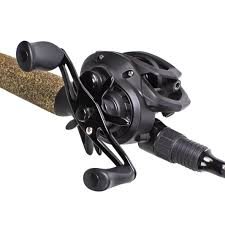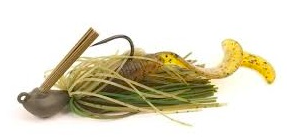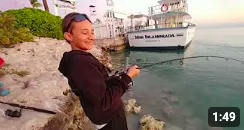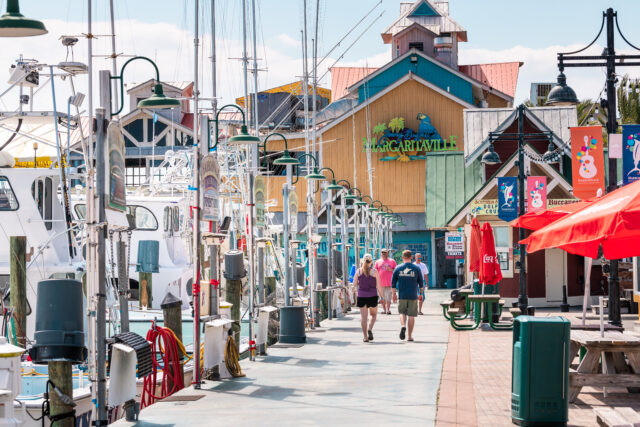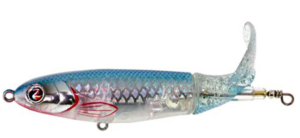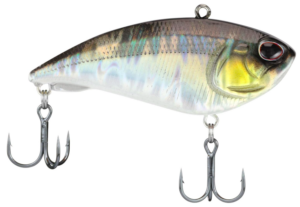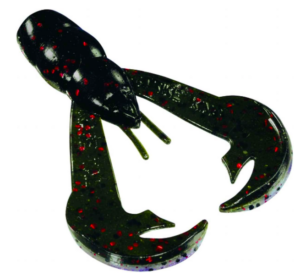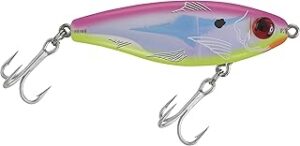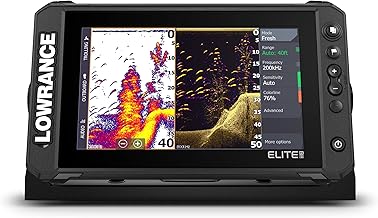Welcome to our Largemouth Bass Fishing Home Page
Largemouth bass are the most popular game fish targeted across the U.S., providing excitement whether you’re fishing for fun or competing in tournaments. Regardless of whether you’re a beginner or a seasoned angler, this section is packed with information designed to help you catch more bass. From tips and techniques to gear recommendations and insights into bass behavior, you’ll find everything you need to enhance your bass fishing experience.
There Are Different Strains of Largemouth Bass
Northern Strain Largemouth Bass
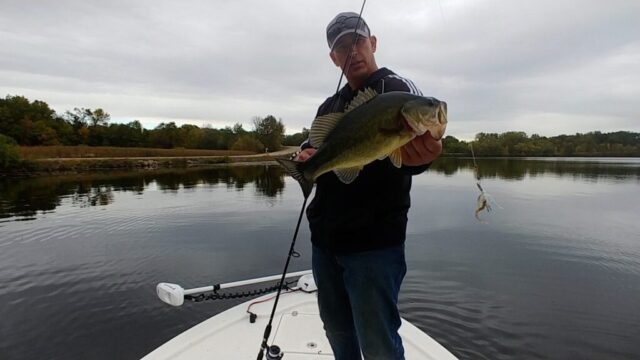
Northern strain bass are known for being aggressive, which makes them susceptible to a wide variety of lures and presentations. They grow more slowly and can thrive in cooler water temperatures, making them common targets in northern waters all over the United States and into some parts of Canada.
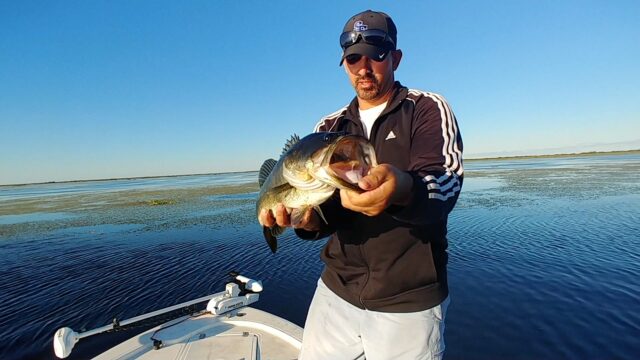
The Florida strain bass is now just called a Florida Bass and with so many southern waters now stocking their lakes with Florida strain largemouth bass, anglers need to know about some of the differences so they can make the appropriate adjustments needed to catch these giant bass.
Best Lures
Soft Baits | Hard Baits | Topwater Lures
Best Fishing Rigs
Best Fishing Techniques
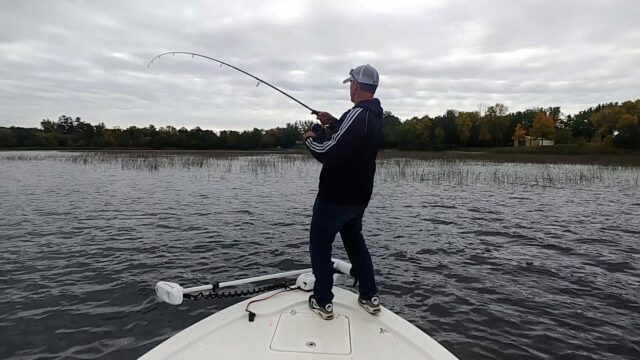
Catching largemouth bass involves a variety of techniques, each suited to different conditions and bass behavior. Learn about the different techniques so you can put more bass in the boat.
Catch Big Bass
Largemouth bass have huge mouths and they will gladly eat a bigger bait. When water temperatures warm up in the summer, they seem even more willing to eat a real big bait. The better anglers usually catch bigger bass with bigger crankbaits, swimbaits, big 10 to 12 inch worms and big lizards in the summer time.
Catch Lots of Bass
To consistently catch a high number of largemouth bass, focusing on action-sized bass—generally in the 10 to 16-inch range—is a smart strategy. These bass are often more aggressive and willing to bite, which makes them easier targets for anglers. Use smaller lures to up your odds for more bites. On waters with lots of smaller bass, anglers can catch 30 to 50 bass in a day with the right baits and techniques.
Best Largemouth Bass Fishing Destinations
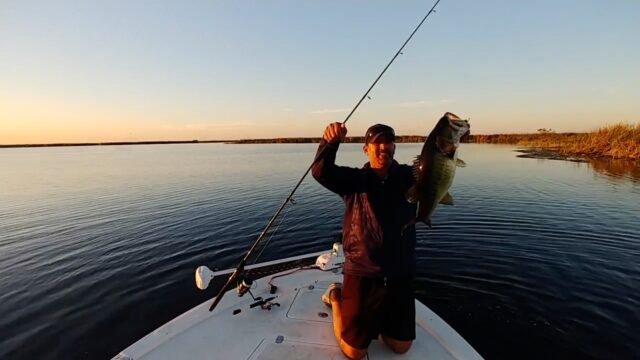
There are so many awesome largemouth bass fishing destinations. If you’re looking for big largemouth bass, the northern part of the United States cannot compare to the south. However, there are so many cool fishing destinations in the north that many anglers would prefer to go on a fishing vacation for largemouth bass. You have so many options. Target large numbers of largemouth bass, huge bass or just go someplace awesome that has good largemouth bass fishing.
Best Largemouth Bass Fishing Destinations
Best Live Baits

Live bait definitely increased your odds of catching good numbers of bass and big fish too. Nigthtcrawlers, leeches, minnows and bluegill are great baits for targeting largemouth bass.
Largemouth Bass Love Weeds
Fishing the weeds can be highly effective for catching bass since these areas offer essential cover, shade and plenty of food. Bass often inhabit a variety of vegetation such as lily pads, milfoil, hydrilla and other aquatic plants. These habitats serve as ambush points for bass to take advantage of prey that swims past them.
Emergent Vegetation
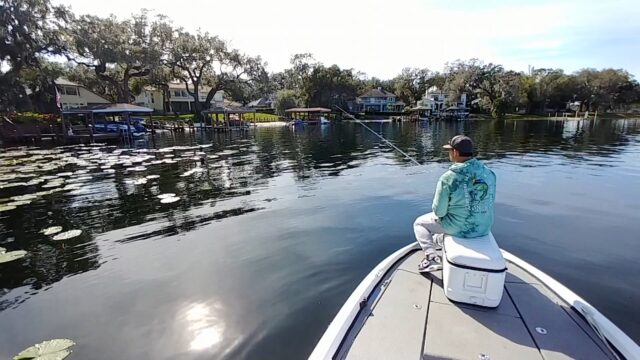
Emergent vegetation, which includes plants that grow above the water’s surface such as reeds, cattails, and grasses, provides excellent cover, food, and oxygenation, making it a prime habitat for bass.
Submerged Vegetation
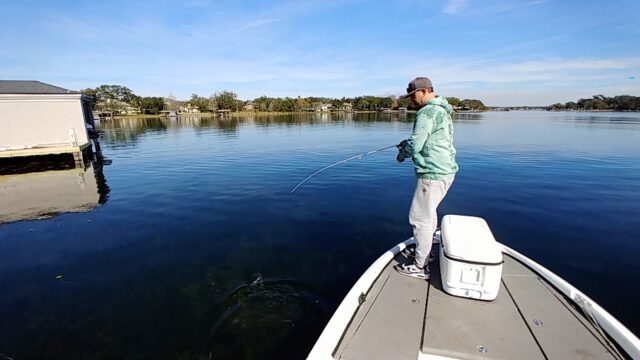
Fishing submerged vegetation can be a highly effective technique for targeting largemouth bass, as these areas provide cover, shade, and abundant food sources. Use baits that stay just above the tops of the weeds or that dive down into the weed pockets. Topwater lures can also be effective.
Fish the Weed Edges
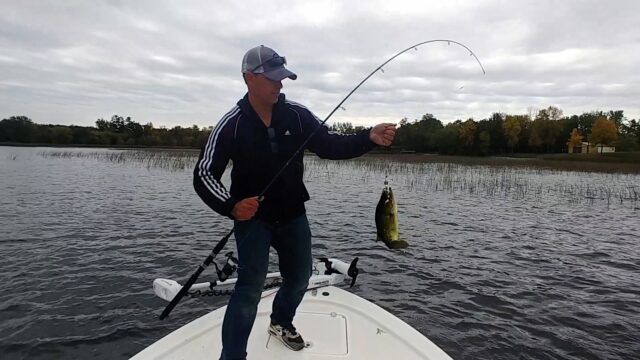
Fishing the weed edges is a highly effective strategy for targeting largemouth bass. These areas provide a natural transitional zone where bass like to hunt for prey.
Fish the Weed Pockets
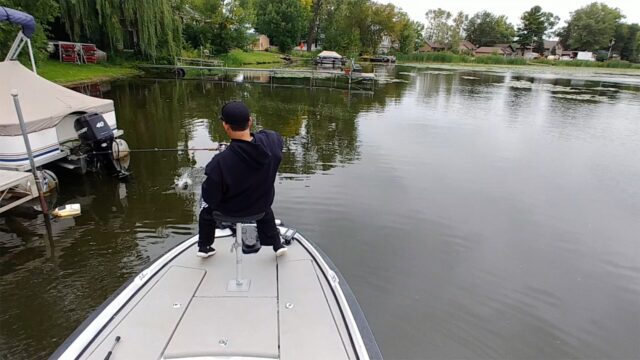
Fishing the weed pockets for largemouth bass can be highly rewarding since these openings in dense vegetation often attract bass looking for prey. With the right setup, you can present a bait to these fish and get them to bite.
Flipping
Flipping is a precise, short-distance technique that allows anglers to quietly present lures to bass that are hiding in dense cover. This is one of the best ways to prevent baits to these fish without spooking them. It involves using a controlled amount of line, kept close to the rod length, while gently flipping the lure into targeted spots.
Punching
Punching is a powerful bass fishing technique designed to penetrate thick vegetation to reach that are hiding beneath mats of weeds, such as hydrilla, lily pads or duckweed. Punching involves using heavy weights to punch through the dense surface vegetation. It’s particularly effective in the summer months when bass seek shade and cooler temperatures under thick cover.
| Weedless Presentations
Weedless presentations are essential for fishing in and around heavy vegetation where bass often hide. These techniques allow you to present your lure without it getting snagged up, so you can get more bass into the boat. |
Use Heavy Tackle
Heavy tackle is important for fishing around heavier vegetation, especially if there are big bass on the body of water that you’re fishing. Anglers use medium-heavy to heavy rods and reels with line weights ranging from 17 – 65 pound test. |
Largemouth Bass Love Wood
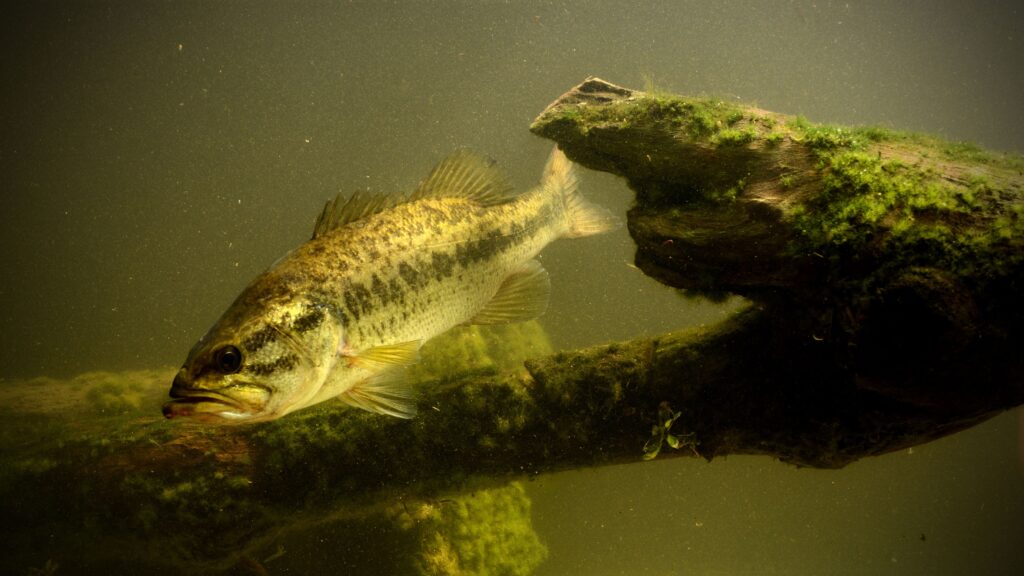
Wood is probably the second most common type of cover where bass are found. Flooded brush and timber, laydowns and overhanging trees can provide some excellent bass fishing for good numbers and quality-sized fish.
Submerged Trees
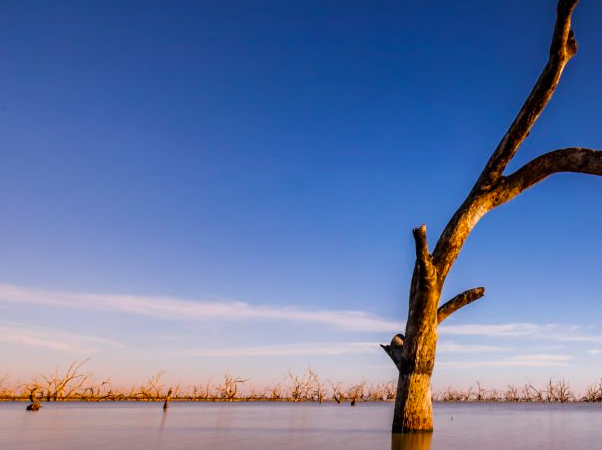
Submerged trees are a prime habitat for largemouth bass, especially in the southern United States, where they are commonly found in reservoirs. These structures provide ideal conditions for bass due to the cover and feeding opportunities they offer.
Overhanging Trees
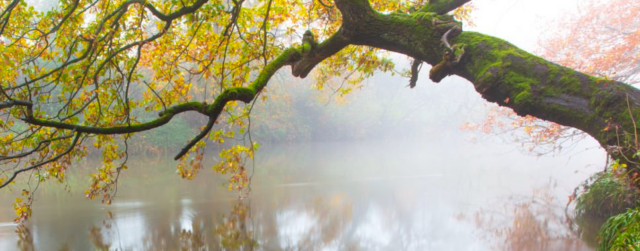
Fishing under overhanging trees can be very productive for catching bass, as these areas provide excellent shade and cover. However, getting your bait into the right spots without snagging can be challenging. Skipping baits is an effective technique to achieve accurate and snag-free presentations.
Laydowns
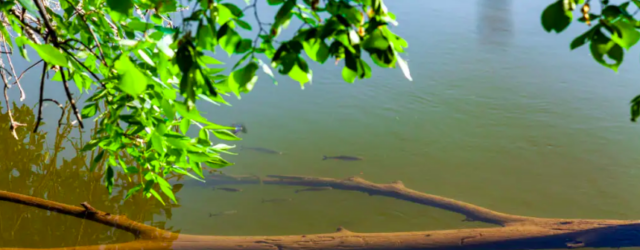
Fallen trees, or “laydowns,” are excellent structures for targeting largemouth bass. These trees, either naturally fallen or purposefully placed in the water, create an ideal habitat for bass due to the shade, cover and food sources they provide.
| Weedless Presentations
Weedless presentations are essential for fishing in and around heavily wooded cover where bigger bass often hide. These techniques allow you to present your lure without it getting snagged up. |
Use Heavy Tackle
Heavy tackle is important for fishing around the wood, especially fishing around large trees. Anglers use medium-heavy to heavy rods and reels with line weights ranging from 17 – 65 pound test. |
Current
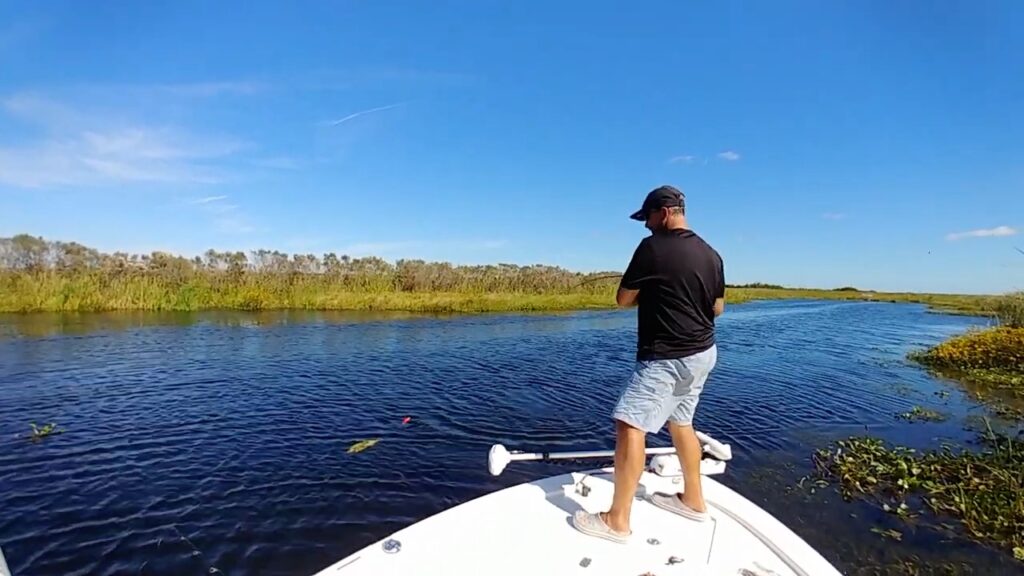
Many lakes and reservoirs that are home to largemouth bass will have current in them. While largemouth bass will usually prefer the slack water over moving water, they do often use the current to their advantage for feeding and protection.
Ambush Spots
Bass often position themselves behind rocks, logs, or other structures to stay out of the main flow while waiting to ambush passing prey.
Oxygen & Food
Current brings a constant supply of oxygen and food, making areas with moving water attractive to bass.
Cooler Water Temperatures
Cooler, moving water can be very appealing during the warmer months of the year as it provides a more comfortable environment for largemouth bass.
Docks
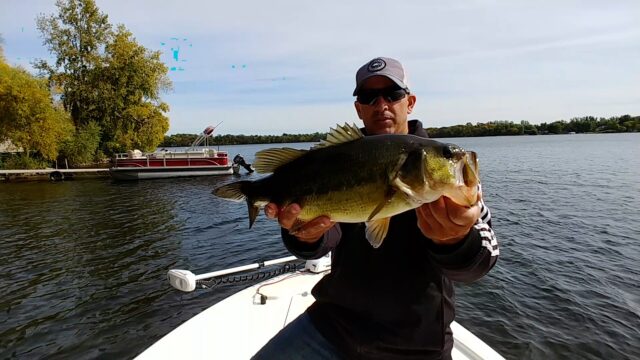
Dock fishing can be highly effective for targeting largemouth bass, as docks provide excellent cover, shade, and feeding opportunities. From spring through fall, anglers will catch largemouth bass under, next to and near the docks. Find a dock with a good mixture of shallow water, deep water, shade and other cover such as wood or weeds and you will have an excellent spot to catch a bass.
Flats
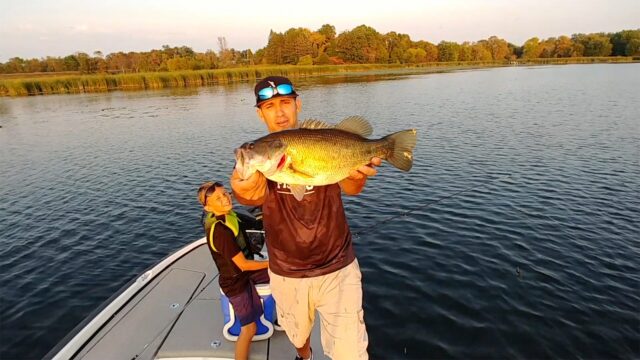
Fishing the flats can be an excellent strategy for targeting largemouth bass, especially in shallow, weedy areas where bass often feed and seek shelter. The spring is usually the best time to fish a large stretch of flats, however, don’t rule out the flats in the summer and fall if there is good weed growth and bait in the area.
Offshore Structure
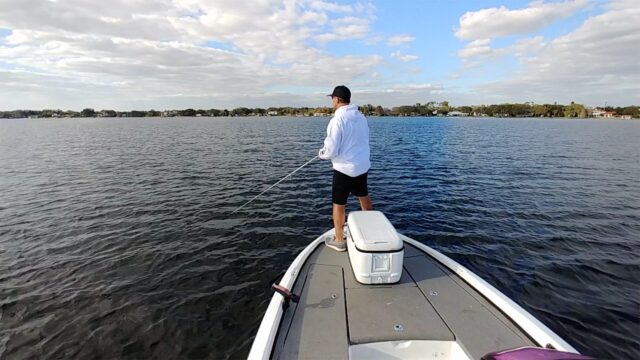
Offshore structures can include underwater points, humps, ledges, and submerged rock formations. Fishing offshore can definitely be hit or miss, however, it is one of the best ways to target big bass in the summer through winter months.
Points
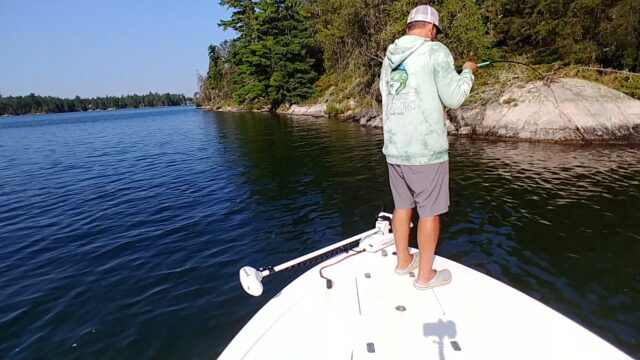
Fishing points can be one of the most effective ways to target largemouth bass. Points extend into the water from the shoreline and they often provide excellent feeding and ambush opportunities for largemouth bass. Every point is not created equal and many of these spots receive a lot of fishing pressure, so you may have to be there at just the right time if you want to load the boat in a hurry. The best points will have a mixture of hard bottom, vegetation, shallow water and deep water nearby.
Rocks & Boulders
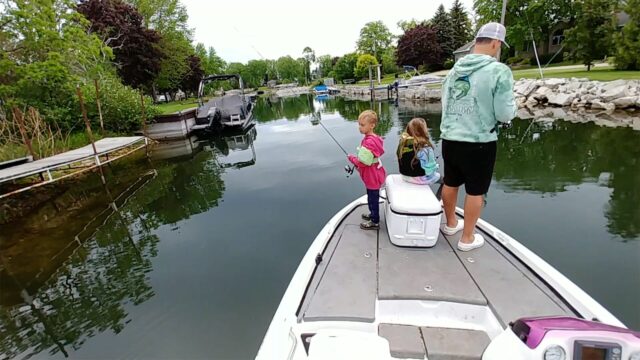
Fishing around rocks and boulders can be an effective strategy for targeting largemouth bass as these structures provide excellent cover, ambush points and a habitat for bait fish. Anglers usually do well around these rocky bottoms with crayfish baits and minnow-style baits. Worms will also work, but largemouth bass usually move into these rocky areas to feed on crayfish and bait fish, so you can up your odds of getting bit by matching what they are already eating.
Clear Water
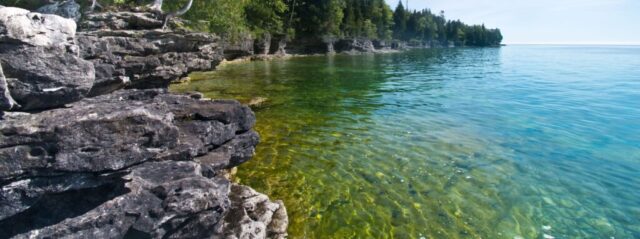
Fishing for largemouth bass in clear water can present unique challenges and opportunities. The visibility allows bass to see your lure more clearly, which can makes it easier to get them to see your bait, but it also makes it easier for them to inspect the bait, line and even see you and your boat as you retrieve the bait back to the boat. Fishing clear water can be very challenging, but if you make some adjustments, you can put more bass in the boat while fishing some absolutely beautiful waters.
Downsize Your Rod, Reel & Line
Downsizing your rod, reel, and line when fishing for largemouth bass in clear water can significantly improve your success rate. Lighter line is harder for them to see. As you go lighter with your line, you are also going to need a lighter action rod so you don’t snap your line on the hook sets or while fighting a larger bass.
Use Fluorocarbon Line
Fluorocarbon line is virtually invisible underwater, especially when using light line weight such as 6 and 8 pound test. It is an excellent choice for clear water conditions where bass can be more line-sensitive.
Use Baits That Look Realistic
Using baits that look realistic is crucial when fishing for largemouth bass in clear water. In these conditions, bass can be more cautious due to increased visibility, so opting for lifelike presentations can make a significant difference.
Translucent Baits Tend to Get Bit More
Translucent baits can be particularly effective for catching bass, especially in clear water conditions. Their ability to mimic the appearance of natural baitfish and other aquatic prey makes them appealing to wary fish.
Murky Water
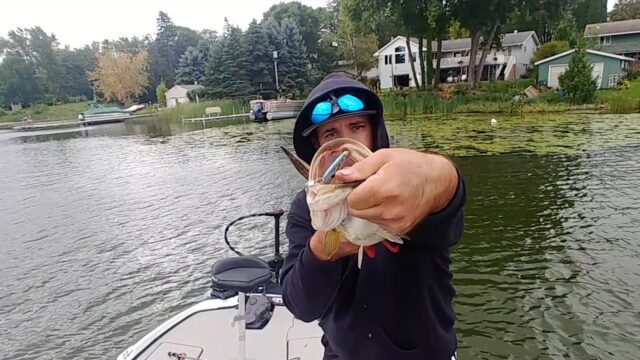
Fishing for largemouth bass in murky water can be a bit different from fishing in clear water, but it can also be very productive. Murky water often affects visibility and the bass’s behavior, which means you may need to adjust your tactics.
Use Brighter Colors
Brighter-colored baits stand out and are more easily visible to bass. Many anglers have good success by using baits that are chartreuse, pink or orange because they stand out so well.
Use Louder Lures
Opt for lures that create noise and vibration, such as rattling crankbaits, noisy topwater lures or spinnerbaits as bass may rely more on their lateral line in low visibility conditions.
Large Profile Baits Work Great
Use larger baits to create a bigger target for bass as they can be more aggressive in murky water. Going larger doesn’t always work, but in some instances, it can be the difference in a great day or just an average day on the water.
Shallow Water
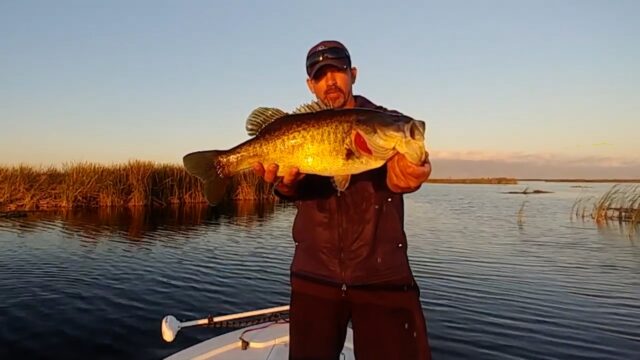
Fishing for largemouth bass in shallow water can be highly productive, especially during the warmer months when bass move closer to the shore to feed and spawn. Visit our shallow water page to see all the great techniques for shallow water bass fishing.
Deep Water
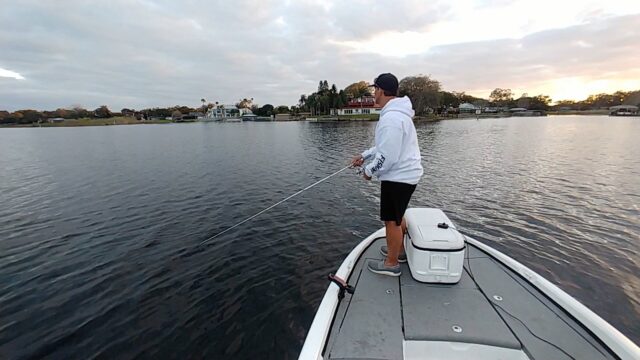
Deep water bass fishing can be an effective strategy, especially during warmer months when largemouth bass often retreat to cooler, deeper areas. Many anglers struggle to find bass in deeper water, but it isn’t that hard with good electronics. You are going to find to look for deep cover such as submerged weeds and weed lines. Some bodies of water will have wood such as trees, laydown, fish cribs and other types of wood out in deeper water. The hardest way to find them is to look for schools of bait fish out in open water, however, this has gotten a lot easier with the technology that is available with modern fish finders and other electronics.
Time of Day
Morning & Evening
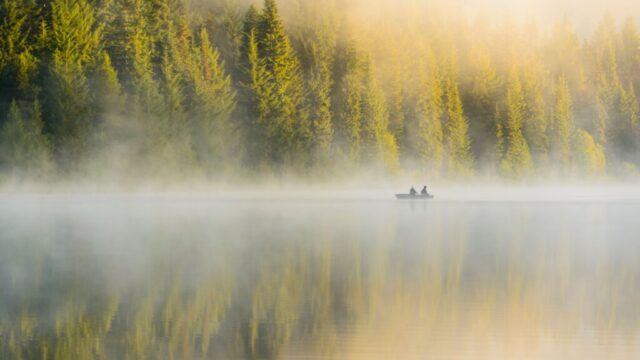
Fishing for bass in the early morning and late evening can be highly productive times due to increased bass activity during these low-light conditions. During these times, bass often feed heavily as they prepare for the day ahead or replenish after a day of hiding. These are the times of day where you can experience some unbelievable fishing during their feeding frenzy.
Mid-Day
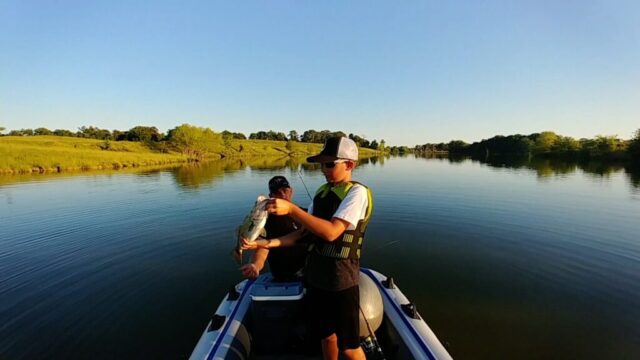
Fishing for largemouth bass during mid-day can be challenging due to higher temperatures and decreased feeding activity. However, with the right strategies and techniques, you can still find success. Most anglers do well by fishing closer to cover or deeper. Live bait also helps.
In the spring, mid-day fishing can be flat out awesome leading up to the spawn. During the cooler months, mid-day fishing can also be better due to the rising water temperatures. Current being generated mid-day can also improve the bite. Otherwise, mid-day fishing is usually not as good as the peak feeding windows you will find in the early morning and evening.
Night
Bass fishing at night can be an exciting and productive experience, especially for targeting largemouth bass, which often become more active after the sun sets. However, there are so many challenges that arise while night fishing for bass. Night fishing isn’t for everybody, but if you are interested in trying it, bring a buddy and start out by fishing areas that you know. Scout the spots you want to fish while it is still light out and this will make it easier on you once the sun sets.
Time of Year
Spring
Spring is one of the most exciting times for bass fishing, as water temperatures rise and bass become more active. This season marks the spawning period for many bass species, and understanding their behavior during this time can significantly improve your success.
Pre-Spawn
As water temperatures begin to rise (typically into the 50s and 60s °F), bass move from deeper waters to shallower areas in search of spawning grounds. They become increasingly aggressive as they prepare to spawn. For many anglers, this is the best time of year to target big bass.
Spawn
When water temperatures reach about 60-70°F, bass will start spawning. Males will create nests in shallow, protected areas. Females will lay eggs, and males will guard the nests. Fishing for spawning bass is always a hot topic every year. Each angler needs to make the choice for themselves whether they want to target these spawning bass. If you do fish for them, make sure to release them immediately so they can finish their spawn and help set up the next generation of bass.
Post-Spawn
After spawning, larger bass tend to become lethargic, making them difficult to locate and challenging to entice into biting. Typically, you can expect a week of fantastic fishing followed by a significant decline in catch rates for bigger bass after the spawn concludes. This one-week window can be unpredictable due to the numerous environmental factors that influence spawning activity. If you regularly fish the same body of water during a two-week period when this occurs, you’ll likely recognize this pattern: one week will be exceptionally productive, while the next could bring frustrating fishing conditions.
Summer
Summer bass fishing can be incredibly rewarding, but it often requires specific tactics and techniques due to changes in bass behavior and environmental conditions. As water temperatures rise, bass often seek out cooler areas, such as deeper water, shaded structures, or heavily vegetated areas. Bass can be very active in the early morning and late evening, but may become lethargic during the hottest parts of the day. They often suspend in deeper waters or seek shelter.
Fall
Fall bass fishing offers an exciting and rewarding opportunity as bass shift from their summer patterns in preparation for winter. During this season, they become more active in their search for food, fattening up for the colder months ahead. However, the bite can be inconsistent due to the passage of cold fronts and dropping water temperatures. As temperatures decline, vegetation begins to die off, which can change the location of large numbers of bass from one day to the next. Eventually, the colder days will lead to turnover in many lakes and ponds, which creates another set of challenges for bass anglers.
As fall progresses, water temperatures can drop so low that only specific techniques will yield bites. Consequently, fishing conditions can fluctuate dramatically, with days of fantastic fishing followed by periods of disappointing results—all within the same week.
Winter
Winter bass fishing can be challenging on the lakes and reservoirs that still have fishable water. Largemouth bass don’t bite well through the ice, however, some anglers do target them. Your best bet is to head to the warmest states if you want to fish in the winter for bass. Our recommendation is to go to Florida to experience the excellent bass fishing available in that state during the winter months.
Weather
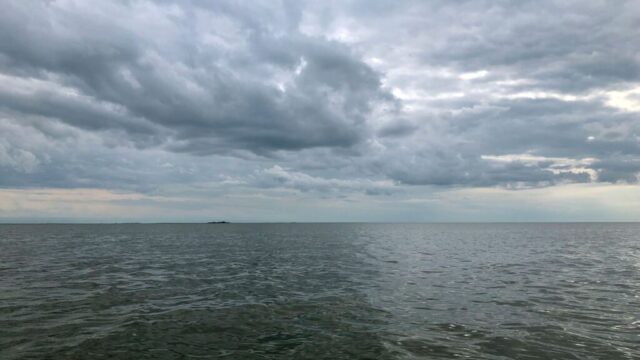
Weather plays a significant role in bass fishing, influencing not only the behavior of the fish but also the effectiveness of different fishing techniques.
Warm Fronts
In the spring, late fall and winter, warm fronts can be an angler’s best friend. The warmer weather will create excellent opportunities for catching largemouth bass. As temperatures begin to rise, bass often become more active and start to feed more aggressively.
Cold Fronts
Fishing during a cold front can present challenges, as the drop in temperature and changes in atmospheric pressure often affect bass behavior. For most anglers, the key to fishing cold fronts is to fish closer to cover, slow down their presentations, downsize their baits, use live baits or fish rivers as bass in rivers tend to be affected less by cold fronts. For some anglers, the best thing they can do after a cold front is stay home and get caught up with their chores.
Wind
Wind can significantly influence bass fishing, impacting bass behavior, lure selection, and fishing techniques. Understanding how wind affects the fishing environment can enhance your success on the water. Wind also helps to oxygenate the water, which can make bass more active and increase feeding opportunities. This is especially beneficial in warmer weather when oxygen levels may drop. Winds can push bait fish towards the shore or into certain areas and the bass will follow as they can often gorge on large amount of bait in short amounts of time. Wind will also create current which can help position bass as they ambush bait that gets swept by them in the moving water.
Clouds
Clouds can significantly influence bass fishing, altering bass behavior, activity levels, and feeding patterns. Overcast days often lead to increased bass activity as the reduced light can make bass feel more secure to roam and feed, especially in shallower waters. Cloudy days will often provide better fishing during the middle of the day than you will experience on sunny days. This isn’t always the case, especially in Florida, as the opposite may be true on many occasions for those Florida bass. However, overcast days will often create some of the best bass fishing opportunities on most waters throughout the majority of the country and into Canada.
Sun
The sun plays a significant role in bass fishing, influencing bass behavior, feeding patterns, and the effectiveness of certain fishing techniques. During the colder months of the year, sun is your friend as it can warm the water and improve the fishing as the water continues to warm. During the summer months, the sun can make fishing worse as it pushed bass deeper and further into cover for the fish that stay shallow, making it more difficult to find them and present a bait to them.
Barometric Pressure
Barometric pressure is the weight of the air above us. It can fluctuate due to weather changes, such as approaching storms or clearing skies. A drop in barometric pressure often occurs with incoming weather systems, while rising pressure is typically seen after a cold front or clear weather.
As barometric pressure drops, bass often become more active and aggressive. This is typically a good time to fish as bass will be more likely to feed. When barometric pressure rises, bass may become more lethargic and harder to catch. They often retreat to deeper water or further into cover and are often less willing to strike a wide variety of baits. Bass will often stop feeding or only feed on a specific bait, which is why many anglers use live bait during these conditions.
